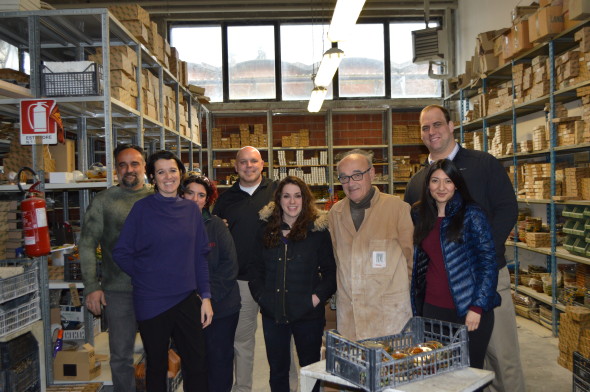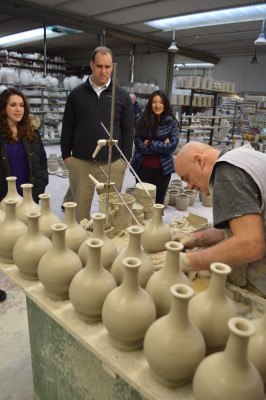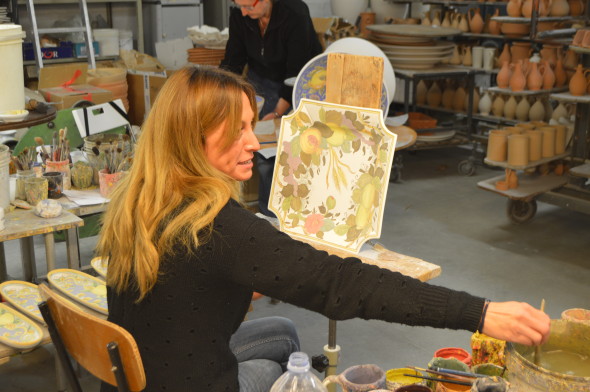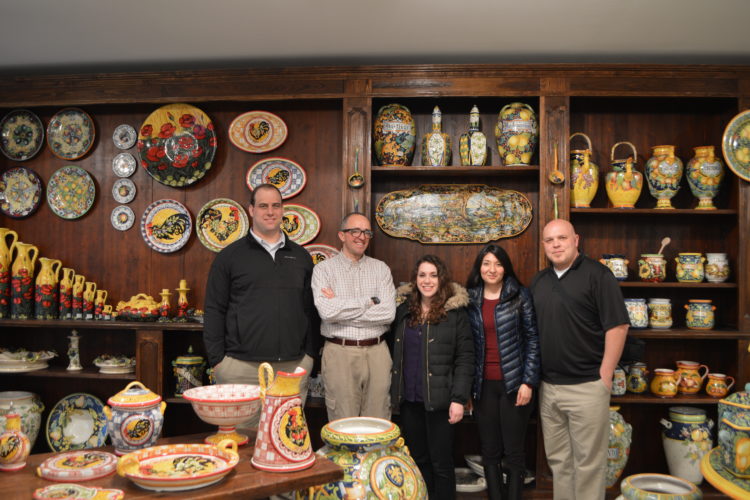Across the rolling hills of Tuscany and through the Arno Valley lies the hamlet of Montelupo, the homeland of Tuscan ceramics; or as Sauro Servadei would say, “The kingdom of the dust”. Here, following the traditions of millennia, artisans still create ceramic masterpieces in much the same way as the Romans did. With hand and wheel, modern artists carry on the immortal tradition of creating unique pieces tailored to meet the demand of modern society.
 The first workshop we visited was Ceramiche D’Arte Ammannati, namesake of the famed and controversial marble worker who sculpted the Fountain of Neptune in the Piazza Vecchio.
The first workshop we visited was Ceramiche D’Arte Ammannati, namesake of the famed and controversial marble worker who sculpted the Fountain of Neptune in the Piazza Vecchio.
Within the walls of Ammannati’s workshop, modern day artisans use clay and paint to create custom made monuments to the skill and craftsmanship of Tuscan ceramics workers. Ammannati derives a significant portion of its value from its ability to tailor its product to customer needs.
Namely, the customer can have anything that they want painted on an Ammannati shape.
 Next, we toured perhaps the most unique and modern facility on our trip, Marzi srl. Using resin and natural materials, Marzi blends together the modern ephemeral trends of society with the interminable style of nature. Martzi capitalizes on the juxtaposition of modern tastes with ancient roots, and creates products as at home in a 21st century resort hotel as a 15th century Tuscan farmhouse.
Next, we toured perhaps the most unique and modern facility on our trip, Marzi srl. Using resin and natural materials, Marzi blends together the modern ephemeral trends of society with the interminable style of nature. Martzi capitalizes on the juxtaposition of modern tastes with ancient roots, and creates products as at home in a 21st century resort hotel as a 15th century Tuscan farmhouse.
 The third visit of the day was to a larger company called Ceramiche IMA. While Ammannati has very flexible production capabilities, it cannot produce the large volumes of ceramic pieces required from larger stores in the United States. IMA, however, has the facilities and capability to meet demand for companies like Pottery Barn in the United States, who need larger orders of identical objects.
The third visit of the day was to a larger company called Ceramiche IMA. While Ammannati has very flexible production capabilities, it cannot produce the large volumes of ceramic pieces required from larger stores in the United States. IMA, however, has the facilities and capability to meet demand for companies like Pottery Barn in the United States, who need larger orders of identical objects.
After a guided tour from the owner of the company, we developed a new found respect and understanding of what is required to maintain uncompromising quality and meet unyielding quantity in today’s society.
 Our last stop of the day was a Ceramiche MORI, a five person operation nestled into a larger industrial area.
Our last stop of the day was a Ceramiche MORI, a five person operation nestled into a larger industrial area.
MORI thrives in today’s market by adjusting its products to meet modern demand. After spending most of his life as an itinerant ceramics painter, Mr. Mori finally opened up his own shop. Everything at MORI is handmade from start to finish. As such, no two pieces are the same and a visit to his shop will surely be an eye opening and worthwhile experience.



